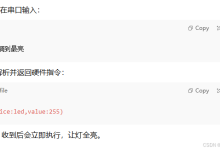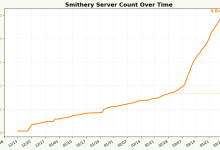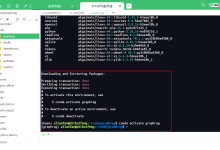一、背景与目标:从知识隔离到本地化智能体
在人工智能应用日益普及的今天,隐私保护与数据主权成为重要挑战。传统的AI模型依赖外部服务,导致私有知识面临泄露风险。本文将详细介绍如何构建一个完全本地化的AI智能体,通过自定义的Model Context Protocol(MCP)服务器实现知识隔离,并结合Llama 3.2轻量级模型实现工具调用能力。这一方案不仅确保数据完全在本地运行,还能通过工具调用与私有知识库深度交互,为本地化智能应用提供了可行路径。

(一)MCP服务器的前世今生
在之前的文章中,笔者构建了一个自定义MCP服务器,其核心目标是实现三大功能:
避免AI模型对文件系统进行写入操作,防止数据篡改。
隐藏文件目录结构,仅向模型暴露必要的知识内容。
通过自主实现MCP协议,深入掌握其工作原理。
该服务器通过标准输入输出(stdio)与外部通信,能够连接Obsidian知识库,提供工具调用接口。例如,list_knowledges工具用于获取知识库中的文件列表,get_knowledge_by_uri工具通过URI检索具体知识内容。这些工具为后续智能体的构建奠定了基础。
(二)从外部模型到本地化的挑战
尽管现有MCP服务器已实现知识隔离,但依赖外部AI模型(如Claude)仍存在两大问题:
- 成本限制
Claude等服务需付费订阅,免费版本功能受限。
- 隐私风险
私有知识需传输至外部服务器,存在泄露隐患。
因此,构建完全本地化的智能体成为必然选择。核心目标包括:
实现MCP客户端,与自定义服务器通信。
集成本地运行的LLM模型,替代外部服务。
构建智能体框架,结合MCP工具与LLM实现问答逻辑。
二、核心技术选型:轻量级模型与工具调用机制
(一)Llama 3.2模型的选择
在智能体开发中,语言模型是核心“大脑”。考虑到本地化运行需求,需选择轻量级且支持工具调用的模型。Llama 3.2系列的1B/3B模型成为理想选择,其特点包括:
- 设备友好性
可在本地GPU/CPU运行,无需云端资源。
- 工具调用支持
内置对函数调用的理解能力,符合MCP协议需求。
- 性能平衡
通过结构化剪枝与知识蒸馏,在模型大小与推理能力间取得平衡。
Meta官方数据显示,Llama 3.2 3B模型在保持较小体积的同时,能够处理复杂指令并生成高质量响应。例如,在工具调用场景中,该模型可解析函数参数并生成正确的调用格式,尽管其多轮对话能力稍逊于70B以上的大型模型。
(二)工具调用流程解析
Llama模型的工具调用基于特定的提示格式与角色机制,核心流程如下:
"name": "get_user_name",
"description": "Retrieve a name for a specific user by their unique identifier",
"parameters": {
"type": "dict",
"required": ["user_id"],
"properties": {"user_id": {"type": "integer"}}
}
}
用户问题触发模型判断是否需要工具。例如,查询用户ID为7890的名称时,模型生成工具调用表达式[get_user_name(user_id=7890)]。
应用解析调用表达式,通过MCP客户端执行工具,将结果(如{"output": "Hyunjong Lee"})以ipython角色返回模型。
模型结合工具输出生成最终回答,如“The name of user who has the ID is Hyunjong Lee”。
需要注意的是,轻量级模型(如3B)在处理多轮工具调用时可能不稳定。Meta建议,对于复杂对话场景,优先使用70B以上模型,但在单轮或简单多轮调用中,3B模型仍可胜任。
三、智能体架构设计:从客户端到对话逻辑
智能体的整体架构包含三大核心组件:MCP客户端与管理器、LLM模型接口、智能体逻辑层。以下是各部分的详细实现。
(一)MCP客户端与管理器
1. MCP客户端实现
使用Python的MCP SDK构建客户端,通过标准输入输出与服务器进程通信。核心类MCPClient负责连接服务器、初始化会话并执行工具调用:
class MCPClient:
async def connect_to_server(self, server_script_path):
server_params = StdioServerParameters(command="python", args=[server_script_path])
stdio_transport = await self.exit_stack.enter_async_context(stdio_client(server_params))
self.read, self.write = stdio_transport
self.session = await self.exit_stack.enter_async_context(ClientSession(self.read, self.write))
init_result = await self.session.initialize()
self.name = f"{init_result.serverInfo.name}(v{init_result.serverInfo.version})"
async def call_tool(self, name, args):
response = await self.session.call_tool(name, args)
return response.isError, response.content
客户端遵循MCP握手流程:首先发送初始化请求,获取服务器信息(如协议版本、工具列表),然后通过list_tools、list_resources等方法枚举可用资源,通过call_tool执行具体工具。
2. MCP管理器
为支持多服务器管理,设计MCPClientManager类,负责客户端实例的创建、销毁及工具映射:
class MCPClientManager:
def __init__(self):
self.clients = []
self.tool_map = {} # 工具名到客户端索引的映射
async def init_mcp_client(self, server_paths):
for path in server_paths:
client = MCPClient()
await client.connect_to_server(path)
self.clients.append(client)
tools = await client.list_tools()
for tool in tools:
self.tool_map[tool.name] = len(self.clients) – 1
async def call_tool(self, name, params):
idx = self.tool_map.get(name, -1)
if idx == -1:
raise Exception(f"Tool {name} not found")
return await self.clients[idx].call_tool(name, params)
管理器维护工具与客户端的映射关系,确保工具调用请求正确路由至对应的服务器实例。
(二)LLM模型集成
1. Llama.cpp的本地化部署
使用Llama.cpp库在本地运行Llama模型,步骤如下:
- 模型下载从Hugging Face获取Llama 3.2 3B-Instruct模型权重。 from huggingface_hub import snapshot_download
snapshot_download("meta-llama/Llama-3.2-3B-Instruct", local_dir="./models") - 格式转换使用Llama.cpp提供的脚本将模型转换为GGUF格式,便于高效推理。 python convert_hf_to_gguf.py ./models/Llama-3.2-3B-Instruct –outfile model.gguf –outtype f16
-
Python接口封装:通过自定义类LlamaCPP包装Llama.cpp的推理接口,支持提示生成与响应解析。
class LlamaCPP:
def __init__(self, model_path):
self.model = Llama(model_path=model_path, n_ctx=1024)def generate(self, prompt, max_tokens=512):
output = self.model(prompt, max_tokens=max_tokens)
return output["choices"][0]["text"].strip()
2. 提示工程与对话历史管理
为适配Llama的提示格式,设计LlamaMessage与LlamaPrompt类,负责消息格式化与对话历史维护:
class LlamaMessage:
def __init__(self, role, content="", tool_scheme=""):
self.role = role
self.content = content
self.tool_scheme = tool_scheme
def template(self, tool_enabled=False):
prompt = f"<|start_header_id|>{self.role}<|end_header_id|>"
if tool_enabled and self.tool_scheme:
prompt += self.tool_scheme
if self.content:
prompt += f"{self.content}<|eot_id|>"
return prompt
class LlamaPrompt:
def __init__(self):
self.system_prompt = LlamaMessage("system", "You are a helpful assistant.")
self.history = History()
def get_generation_prompt(self, tool_enabled=False, last=50):
prompt = [self.system_prompt] + self.history.get_chat_history(last) + [LlamaMessage("assistant")]
return ''.join([msg.template(tool_enabled) for msg in prompt])
LlamaPrompt类支持动态添加用户、助手、工具结果等角色的消息,并根据tool_enabled参数决定是否在提示中包含工具调用说明,避免轻量级模型因持续看到工具指令而产生混淆。
(三)智能体核心逻辑
1. 工具调用决策与结果处理
智能体通过正则表达式匹配工具调用模式,解析函数名与参数,并调用对应的MCP工具:
class Agent:
def __init__(self, model, prompt, mcp_manager):
self.llm = model
self.prompt = prompt
self.mcp_manager = mcp_manager
self.tool_pattern = re.compile(r'\\[([A-Za-z0-9\\_]+\\(.*?\\),?\\s?)+\\]')
def _is_tool_required(self, response):
return bool(self.tool_pattern.match(response))
async def get_result_tool(self, response):
results = []
for name, params in self.parse_func_params(response):
is_error, content = await self.mcp_manager.call_tool(name, params)
results.append({"name": name, "output": [c.text for c in content]})
return json.dumps(results)
2. 对话流程控制
智能体的chat方法实现完整的对话流程:
将用户问题与工具调用说明组合为用户提示。
生成初步回答,判断是否需要工具调用。
若需要,调用MCP工具并获取结果。
结果合成:将工具结果加入提示,生成最终回答。
async def chat(self, question):
tool_scheme = TOOL_CALL_PROMPT.format(function_scheme=self.mcp_manager.get_func_scheme())
user_msg = self.prompt.get_user_prompt(question, tool_scheme)
self.prompt.append_history(user_msg)
response = self.llm.generate(self.prompt.get_generation_prompt(tool_enabled=True))
if self._is_tool_required(response):
tool_result = await self.get_result_tool(response)
tool_msg = self.prompt.get_tool_result_prompt(tool_result)
self.prompt.append_history(tool_msg)
response = self.llm.generate(self.prompt.get_generation_prompt(tool_enabled=False))
return response
通过tool_enabled参数的切换,智能体在工具调用决策阶段包含工具指令,而在结果合成阶段移除指令,避免模型过度关注工具调用,提升回答的连贯性。
四、实验与优化:从问题发现到效果提升
(一)工具指令注入方式对比
1. 系统提示注入(持续暴露工具指令)
- 问题表现
-
合成回答时出现空响应或无关工具调用。
-
模型过度依赖工具,即使已有结果仍重复调用。
- 案例
用户查询特定知识内容后,模型在回答时错误调用list_knowledges工具。
-
2. 用户提示注入(仅在需要时暴露)
- 优化策略
-
仅在生成工具调用决策时包含工具指令。
-
结果合成阶段移除指令,专注于内容整合。
-
- 效果提升
-
回答相关性显著提高,工具调用更精准。
-
模型能有效利用工具结果,如正确解析知识内容并生成摘要。
-
(二)实际应用案例
1. 知识摘要生成
- 查询
“请总结Obsidian知识库中关于‘AI伦理’的笔记,并以Markdown表格呈现。”
- 流程
-
模型调用get_knowledge_by_uri工具获取笔记内容。
-
根据内容长度自动格式化为表格,尽管存在轻微参数错误,但结果结构化程度高。
2. 空笔记检测
- 查询
“列出标题存在但内容为空的笔记。”
- 流程
-
模型调用list_knowledges获取所有笔记元数据。
-
通过文件字节大小判断空笔记,结果部分正确,需进一步优化筛选逻辑。
3. 问题生成
- 查询
“根据‘机器学习基础’笔记内容,生成5个简答题。”
- 流程
-
调用工具获取笔记内容。
-
模型分析内容结构,生成符合要求的问题,如“什么是监督学习?”
(三)性能与局限性
- 模型性能
Llama 3.2 3B模型在本地CPU(MacBook M1)上的推理速度约为15 tokens/秒,适合交互式场景。
- 功能限制
-
多轮工具调用能力较弱,难以处理复杂推理任务。
-
对模糊查询的理解不足,需明确参数(如正确的URI)才能有效执行工具。
-
代码仓库:GitHub – hjlee94/mcp-knowledge-base: MCP agent/client/server implementation for private knowledge base
 网硕互联帮助中心
网硕互联帮助中心




评论前必须登录!
注册